120 have author last names that start with M have author last names that start with M
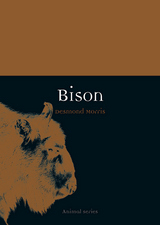
Exploring the bison’s evolution and habitat, Morris paints a nuanced portrait of this iconic animal, exploring the different sides of its personality. He shows that, while generally seen as gentle and calm, bison in fact are very unpredictable, liable to attack at any moment. Comparing and contrasting the two remaining species—the European wisent and the American bison—he goes on to tell the heartbreaking story of their near-extinction, how we hunted them down from innumerable numbers to less than a thousand, with such little regard that it was a common practice for train travelers to shoot them from their passing cars. He also tells the story of our more recent efforts—and successes—at bringing them back to such a point that their domestically raised meat has now become a popular alternative to beef. Throughout, Morris balances this natural history with a cultural one, the lore of the bison and the spirit of the west, dotting his text with vibrant images of the bison from nature, art, and popular culture. The result is an absorbing history of one of the most majestic creatures to walk the plains of the earth.
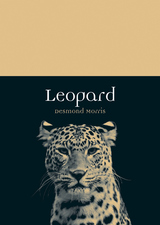
Morris examines the leopard’s athletic elegance, predatory skill, wary shyness, and cunning intelligence while also exploring the animal’s parental devotion, preference for solitude, and capacity for revenge. In addition to tracing the evolution of leopards, he considers how humans have related to the animal throughout history. Leopards, he shows, have long featured in the art, mythology, and folklore of ancient Greece, Persia, Rome, and even England, where they have not lived for several millennia. But humans and leopards do not always coexist peacefully; as Morris explains, leopards have been known to attack humans when their food is scarce or they are injured. He reveals how humans have exploited the cats, attempting to train them for circus roles, and how today some people are now making strides toward the leopard’s conservation. He also describes their rich symbolism, appearances in literature and film, and the use of the leopard print in both haute couture and down-market fashion.
Packed with compelling images of this amazing animal in action, Leopard sheds new light on these gorgeous cats.
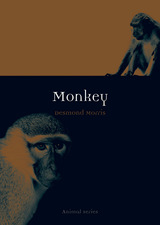
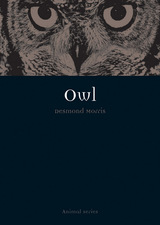
From Edward Lear’s “The Owl and the Pussycat”to David Lynch’s Twin Peaks, owls have been woven into the fabric of popular culture. At times they are depicted as dignified, wise old scholars and at other times as foreboding voyeurs who see all and interrogate with an accusatory, “Who? Who?” In Owl best-selling author Desmond Morris explores the natural and cultural history of these predators of the night who embody both good and evil in turn.
In this fascinating book, Morris describes the evolution, the many species, and the wide spread of owls across the globe. Owls are found on every land mass around the world, with the exception of Antarctica; and as a result of their wide distribution, owls appear in the folktales, myths, and legends of many native peoples—in addition to popular art, film, and literature worldwide. Featuring over 100 telling illustrations from nature and culture, Owl will appeal to the numerous fans of this enigmatic bird, from the friendly Mr. Owls to silent, sinister, hunters of the dark.

Sifting through the grounds of coffee history, Morris discusses the diverse cast of caffeinated characters who drank coffee, why and where they did so, as well as how it was prepared and what it tasted like. He identifies the regions and ways in which coffee has been grown, who worked the farms and who owned them, and how the beans were processed, traded, and transported. Morris also explores the businesses behind coffee—the brokers, roasters, and machine manufacturers—and dissects the geopolitics linking producers to consumers. Written in a style as invigorating as that first cup of Java, and featuring fantastic recipes, images, stories, and surprising facts, Coffee will fascinate foodies, food historians, baristas, and the many people who regard this ancient brew as a staple of modern life.
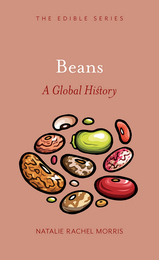

Chemists, Morris shows, are one of the leading drivers of innovation in laboratory design and technology. He tells of fascinating lineages of invention and innovation, for instance, how the introduction of coal gas into Robert Wilhelm Bunsen’s laboratory led to the eponymous burner, which in turn led to the development of atomic spectroscopy. Comparing laboratories across eras, from the furnace-centered labs that survived until the late eighteenth century to the cleanrooms of today, he shows how the overlooked aspects of science—the architectural design and innovative tools that have facilitated its practice—have had a profound impact on what science has been able to do and, ultimately, what we have been able to understand.
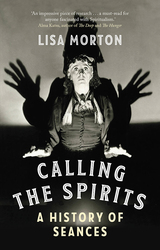
Calling the Spirits investigates the eerie history of our conversations with the dead, from necromancy in Homer’s Odyssey to the emergence of Spiritualism—when Victorians were entranced by mediums and the seance was born. Among our cast are the Fox sisters, teenagers surrounded by “spirit rappings”; Daniel Dunglas Home, the “greatest medium of all time”; Houdini and Sir Arthur Conan Doyle, whose unlikely friendship was forged, then riven, by the afterlife; and Helen Duncan, the medium whose trial in 1944 for witchcraft proved more popular to the public than news about the war. The book also considers Ouija boards, modern psychics, and paranormal investigations, and is illustrated with engravings, fine art (from beyond), and photographs. Hugely entertaining, it begs the question: is anybody there . . . ?
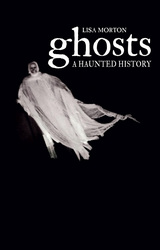
Tracing the ghost’s constantly shifting contours, Morton asks the most direct question—What exactly is a ghost?—and examines related entities such as poltergeists, wraiths, and revenants. She asks how a ghost is related to a soul, and she outlines all the different kinds of ghosts there are. To do so, she visits the spirits of the classical world, including the five-part Egyptian soul and the first haunted-house, conceived in the Roman playwright Plautus’s comedy, Mostellaria. She confronts us with the frightening phantoms of the Middle Ages—who could incinerate priests and devour children—and reminds us of the nineteenth-century rise of Spiritualism, a religion essentially devoted to ghosts. She visits with the Indian bhuta and goes to the Hungry Ghost Festival in China, and of course she spends time in Mexico, where ghosts have a particularly strong grip on belief and culture. Along the way she gathers the ectoplasmic residues seeping from books and film reels, from the Gothic novel The Castle of Otranto to the 2007 blockbuster Paranormal Activity, from the stories of Ann Radcliffe to those of Stephen King.
Wide-ranging, informative, and slicked with over fifty unearthly images, Ghosts is an entertaining read of a cultural phenomenon that will delight anyone, whether they believe in ghosts or not.
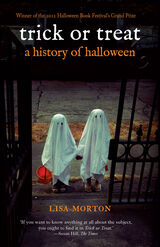
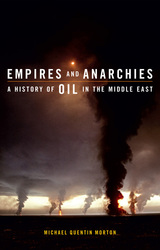
Empires and Anarchies is an unconventional history of oil in the Middle East. In Michael Quentin Morton’s account the burnt-out remains of Saddam Hussein’s armaments and the human tragedy of the Arab Spring are as much of the story as the shimmering skylines of oil-rich nations. From the first explorers trudging through the desert to the excesses of the Peacock Throne and the high stakes of OPEC, Morton lays out the history of oil in compelling detail, arguing that oil simultaneously enriched and fractured the Middle East, eroding traditional ways of life, and eventually contributing to the rise of Islamic radicalism. The book is essential reading for anyone interested in the promises and peril of the world’s oil boom.
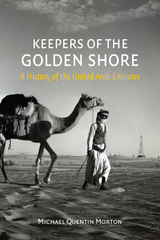
As Michael Quentin Morton recounts, the region now known as the UAE likely began as a trading post between Mesopotamia and Oman, and since that time has been the stage of important economic and cultural exchanges. It has seen the rise and fall of a thriving pearl industry, piracy, invasions and wars, and the arrival of the oil age that would make it one of the richest countries on earth. Since the early 1970s, when seven sheikhs agreed to enter into a union, it has been a sovereign nation, carrying on the resourceful spirit—with resplendent fervor—that the brutally inhospitable landscape has long demanded of the people. Ultimately, Morton shows that the country is not only rich in oil and money but in an extraordinarily deep history and culture.
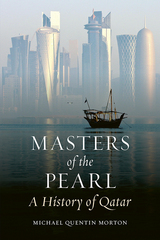

In Arc of Feeling Javier Moscoso investigates the pleasure of oscillation and explores the surprising history of the swing through its meanings and metaphors, noting echoes and coincidences in remote times and places: from the witch’s broom to aerial yoga and from the gallows to sexual mores. Taking in cultural history, science, art, anthropology, and philosophy, Moscoso explores the presence and role of this artifact in the West, such as in the works of Watteau, Fragonard, and Goya, as well as in other Eastern traditions, including those of India, Korea, Thailand, and China. Linked since ancient times with sex and death, used by gods and madmen, as well as an erotic and therapeutic instrument, the swing is revealed to be an essential but forgotten object in the history of human experience.
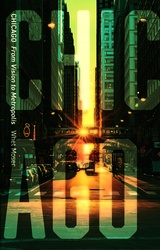
Chicago began as a trading post, which grew into a market for goods from the west, sprouting the still-largest rail hub in America. As people began to trade virtual representations of those goods—futures—the city became a hub of finance and law. And as academics studied the city’s growth and its economy, it became a hub of intellect, where the University of Chicago’s pioneering sociologists shaped how cities at home and abroad understood themselves. Looking inward, Moser explores how Chicago thinks of itself, too, tracing the development of and current changes in its neighborhoods. From Boystown to Chinatown, Edgewater to Englewood, the Ukrainian Village to Little Village, Chicago is famous for them—and infamous for the segregation between them.
With insight sure to enlighten both residents and anyone lucky enough to visit the City of Big Shoulders, Moser offers an informed local’s perspective on everything from Chicago’s enduring paradoxes to tips on its most interesting sights and best eats. An affectionate, beautifully illustrated urban portrait, his book takes us from the very beginnings of Chicago as an idea—a vision in the minds of the region’s first explorers—to the global city it has become.

Chocolate layer cake. Fudge brownies. Chocolate chip cookies. Boxes of chocolate truffles. Cups of cocoa. Hot fudge sundaes. Chocolate is synonymous with our cultural sweet tooth, our restaurant dessert menus, and our idea of indulgence. Chocolate is adored around the world and has been since the Spanish first encountered cocoa beans in South America in the sixteenth century. It is seen as magical, addictive, and powerful beyond anything that can be explained by its ingredients, and in Chocolate Sarah Moss and Alec Badenoch explore the origins and growth of this almost universal obsession.
Moss and Badenoch recount the history of chocolate, which from ancient times has been associated with sexuality, sin, blood, and sacrifice. The first Spanish accounts claim that the Aztecs and Mayans used chocolate as a substitute for blood in sacrificial rituals and as a currency to replace gold. In the eighteenth century chocolate became regarded as an aphrodisiac—the first step on the road to today’s boxes of Valentine delights. Chocolate also looks at today’s mass-production of chocolate, with brands such as Hershey’s, Lindt, and Cadbury dominating our supermarket shelves.
Packed with tempting images and decadent descriptions of chocolate throughout
the ages, Chocolate will be as irresistible as the tasty treats it describes.
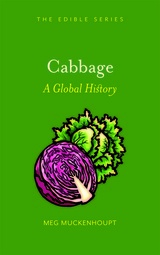
We can’t live without cabbage, but we don’t want to stand downwind of it, and in this lively book, Meg Muckenhoupt traces this culinary paradox. From senators’ speeches in ancient Rome to South Korean astronauts’ luggage, she explores the cultural and chemical basis for cabbage’s smelly reputation and enduring popularity. Filled with fascinating facts and recipes for everything from French cabbage soup to sauerkraut chocolate cake, Cabbage is essential reading for both food lovers and historians around the globe—and anyone craving their daily dose of leafy greens.
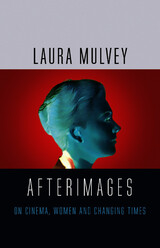
Its title, Afterimages, alludes to the dislocation of time that runs through many of the films and works it discusses as well as to the way we view them. Beginning with a section on the theme of woman as spectacle, a shift in focus leads to films from across the globe, directed by women and about women, all adopting radical cinematic strategies. Mulvey goes on to consider moving image works made for art galleries, arguing that the aesthetics of cinema have persisted into this environment.
Structured in three main parts, Afterimages also features an appendix of ten frequently asked questions on her classic feminist essay “Visual Pleasure and Narrative Cinema,” in which Mulvey addresses questions of spectatorship, autonomy, and identity that are crucial to our era today.
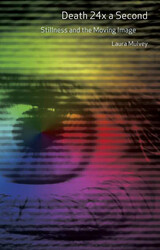
According to Mulvey, new media technologies give viewers the ability to control both image and story, so that movies meant to be seen collectively and followed in a linear fashion may be manipulated to contain unexpected and even unintended pleasures. The individual frame, the projected film’s best-kept secret, can now be revealed by anyone who hits pause. Easy access to repetition, slow motion, and the freeze-frame, Mulvey argues, may shift the spectator’s pleasure to a fetishistic rather than a voyeuristic investment in film.
By exploring how technology can give new life to old cinema, Death 24x a Second offers an original reevaluation of film’s history and its historical usefulness.
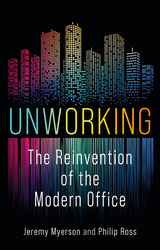
Over the past one hundred years, the office has been integral to the development of modern society. It has shaped the architecture of our cities, the behavior of our organizations, and the everyday movements of millions of people. In 2020, however, the global pandemic brought our attendance in the office to an abrupt halt and triggered a complete reevaluation of the purpose of the workplace. This book offers a panoramic view of the office and explores what happens next. The authors advance a manifesto for “unworking”—unlearning old habits and rituals established for an outdated office and crafting and creating new ones fit for an age of digital technology, design innovation, and diverse workforces.
READERS
Browse our collection.
PUBLISHERS
See BiblioVault's publisher services.
STUDENT SERVICES
Files for college accessibility offices.
UChicago Accessibility Resources
home | accessibility | search | about | contact us
BiblioVault ® 2001 - 2024
The University of Chicago Press









